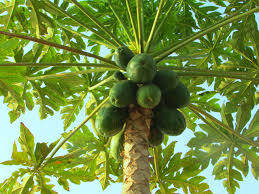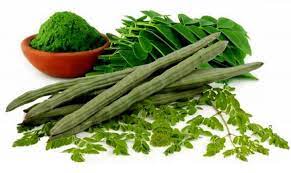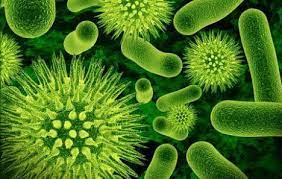
Cassava is the third largest source of food carbohydrates in the tropics, after rice and maize.Cassava is a major staple food in the developing world, providing a basic diet for over half a billion people.It is one of the most drought tolerant crops, capable of growing on marginal soils. Nigeria is the world's largest producer of cassava.
Cassava is the most important root crop in Nigeria. Apart from being a staple crop in both rural and urban household’s cassava is a major source of income to cassava farmers and processors in the rural areas.
Cassava alone contributes about forty-five percent (45%) of agricultural gross domestic product (GDP) in Nigeria for food or domestic purposes but its industrial processing and utilization has been very limited.
Currently, the country produces about forty million (40,000,000) tons of the cassava tubers annually. Glucose syrup is a thick aqueous solution made from the catalytic reaction of edible starch. Cassava starch, the major raw material is a product from cassava.
Although Nigeria’s cassava is being processed to local foods, its greater potential lies in its being processed to (intermediate) industrial products as to enable processors access higher value markets.
Glucose syrup production from cassava can be subdivided into the following process areas of liquefaction, saccharification, and purification. Glucose is produced commercially via the enzymatic process of Starch. Starch is produced from various raw materials like maize, cassava/tapioca roots, potatoes, wheat, rice etc.
The establishment of a process for conversion of cassava starch to glucose syrup would enhance the local capability of glucose syrup production.
The global market for sugar and sweeteners totaled about $77.5 billion in 2012 and is projected to increase at a compound annual growth rate (CAGR) of four point six percent (4.6%) and reach nearly $97.2 billion by 2017.
In this market, sugar holds the majority share, comprising an eighty-three to eighty-five percent (83% to 85%) share. It is worthwhile to note that, although the volume of sugar consumption is rising globally by a compound annual growth rate (CAGR) of approximately four percent (4%), the sugar market value in dollar terms is largely dictated by sugar prices, which are extremely volatile, leading to market-value fluctuations on a year-on-year basis.
The sugar alcohol segment grew from nearly $1.9 billion in 2011 to $2 billion in 2012. This market is expected to grow at a five (5) year compound annual growth rate (CAGR) of seven point nine percent (7.9%) and reach a value of nearly $3 billion by 2017.
The market for high-intensity sweeteners is expected to reach nearly $1.9 billion in 2017. The non-nutritive category has been growing at a faster pace at a compound annual growth rate (CAGR) offive point two percent (5.2%). This growth is due to increased awareness and usage of dietary foods. The growing population of overweight, obese, and diabetic patients globally also is fueling the growth of the category.
Sugar has been the most widely used sweetener in the world, with its closest substitute being high-fructose corn syrup (HFCS).
The Nigerian sugar industry is by no means young, having been first established in the 1960s. It can however be regarded to still be in its infancy given the fact that today, it only supplies about two percent (2%) of the nation's requirement, in spite of our comparative and competitive advantages for sugar production.
This lacklustre performance has deprived the country of all the benefits derivable from a vibrant sugar sector. Chief among these are the annual drain on the nation's foreign exchange earnings put at N 101.9 billion in 2011, the loss of hundreds of thousands of employment opportunities for skilled and semi-skilled labour and food insecurity arising from sugar import dependence. But all these are about to change now.
In 2008, the Federal Government of Nigeria directed the National Sugar Development Council (NSDC), to develop a road map for the attainment of self-sufficiency in sugar within the shortest time possible. In compliance, the Council came up with the Nigerian Sugar Master Plan an abridged version of which is the main subject of this slim volume.
The Plan has estimated that our demand for sugar would breach the one million, seven hundred thousand (1,700,000) metric tonnes (MMT) mark by 2020. To be able to satisfy this from domestic production, we will need to establish some twenty-eight (28) sugar factories of varying capacities and bring about two hundred and fifty thousand (250,000) hectares of land into sugarcane cultivation, over the next 10 years. The bulk of the investment capital will come from private investors.
Nigeria’s sugar requirements are mainly met through imports of raw sugar that is refined locally. Dangote Sugar (installed refinery capacity of one million, fourty four thousand (1,440,000) tons) and the BUA Group (with a capacity of seven hundred and twenty thousand (720,000) metric tons) are the major companies refining sugar in Nigeria.
The Flour Mills of Nigeria and other new investors are entering and/or expanding capacities. In total, investments in annual sugar refining have reached two million, three hundred thousand (2,300,000) tons, exceeding national consumption needs estimated at one million, four hundred and fifty thousand (1,450,000) tons per year.
Despite this overcapacity, more investors have established additional sugar refineries, aiming at future export markets. The increasing investments were spurred by Nigeria’s beneficial tariffs on raw sugar (subject to a duty of just five percent (5%) and exempted from the development levy).
About ninety-eight percent (98%) of all imports come in the form of raw sugar and is refined locally while the remainder of imports is refined sugar. More than 90 percent of raw sugar was imported from Brazil.
Effective January 1, 2013, the Government of Nigeria (GON) revised the sugar tariff structure to revitalize activities in the sugar estates, boost domestic raw sugar production for the sugar refineries and create jobs. New tariffs for raw and refined sugar were announced, as well as for sugar related production equipment and machinery.
The Government of Nigeria (GON) also proposed:
·A zero per cent import duty on machinery and spare parts destined for local sugar manufacturing industries;
·A five (5) year tax holiday for investors in the sugar value chain;
·A ten (10) percent import duty and fifty percent (50%) levy on imported raw sugar;
·A twenty percent (20%) duty and sixty percent (60%) levy for imported refined sugar.
Glucose Syrup is an important sweetener in the food, confectionery and pharmaceutical industries. Currently, local production cannot meet the demand, hence, the local requirement is being met through importation.
Annual demand for sugar in Nigeria is estimated at three million, five hundred thousand (3,500,000) tons per annum but only 2.4 million tonnes is produced locally while an annual demand of one hundred and seventy thousand (170,000) tons exists for high fructose syrup and sixty thousand (60,000) tons/year for glucose.






















